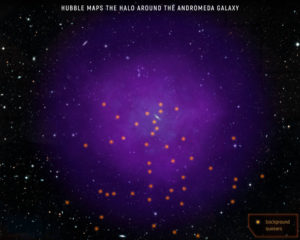Observations, experiments fail to find answers to the questions “Does dark matter exist?” and if it exists, “what is it made of?”. It is estimated that about 85% of the matter in the universe is invisible, the so-called Dark Matter. How can it be possible that such a large amount of matter, which influences in a decisive way the dynamics of cosmic structures, of the entire Universe, escapes all attempts to reveal its nature. Maybe we are searching in the wrong direction, or better we are searching something wrong. Perhaps we are guided by a fundamentally wrong idea: that all matter must be made up of particles. Perhaps it is the ancient atomistic vision, in its increasingly accurate and spectacular versions, such as the Standard Model of Particles, that conditions our observations, our experiments.
The only evidence we should consider in this strange and difficult research is that dark matter appears to be a low-density stuff distributed in large clumps over vast regions of space. We see the effects of the presence of such a strange and invisible stuff, we presume it exists, but no one is able to reveal its nature and composition. Just a large number of hypotheses about more or less strange particles or changes to the laws that we think regulate gravitational phenomena, hypotheses that become less and less plausible every day, as observations and experiments place ever more stringent constraints.
What can we do to get out of this impasse? My opinion is that we should stop looking for “particles”. Instead, we should look for something very large, with a very low density. Nothing that is now present in the Standard Model of Particles can help us. We need to try to better understand the infinitely small, what particles are in terms of what is most fundamental. We hypothesize that the same “substance” of which elementary particles are made, beyond quarks and leptons, bosons, is something that can be structured with various intensities of organization of various forms and densities. Not by chance. But following the laws that govern the dynamics of that hypothetical “substance”, dynamics that rules the conditions of equilibrium that permit the existence of structures characterized by masses, charges, spins, dynamics like those collected in the Standard Model. But not only. Also other structures, low density large extension structures precisely. And as in the case of ordinary matter particles (where it is present in a absolutely hidden, undetectable way), for those large cosmic structures made of Dark matter, Dark energy represents an inseparable element. These two dark stuffs being two complementary manifestations of that same hypothetical substance.
That “substance” is not “strings”, nor “spin networks”, nor “ether”, nor “modified gravity”, etc. That “substance” is Elementary Action. In particular, speaking of mass and gravity, the first mode of Elementary Action, that we call Perturbation. Its dynamics is the Dynamics of the Elementary Action.
Image description: Hubble Maps Giant Halo Around Andromeda Galaxy (Credits: NASA, ESA, and E. Wheatley (STScI))
Image web source: NASA

